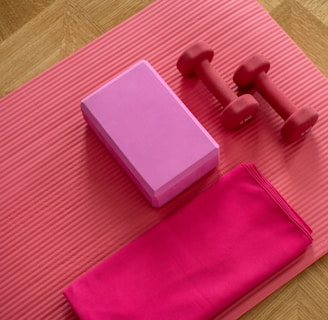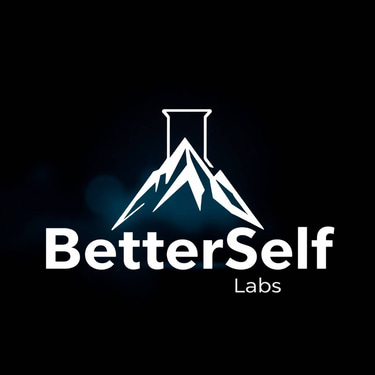Pilates for Beginners: The Low-Impact Workout Taking Over Your Feed
Scrolling through social media lately? You've seen them - those impossibly graceful bodies flowing through movements that look like a cross between yoga and physical therapy. Whether it's popping up at your favorite gym, studio or on your social media platforms, Pilates seems to be everywhere these days. Here's why everyone's suddenly obsessed - and how you can start today.
HEALTH AND FITNESSDIY GUIDES
10/2/20256 min read


What Is Pilates? The Mind-Body Revolution Explained
Pilates is a low-impact exercise method that focuses on controlled movements, breathing, and precise muscle engagement. Created by Joseph Pilates in the early 20th century, this system emphasizes quality over quantity.
Think of Pilates as intelligent movement. Every exercise serves multiple purposes: strengthening your core, improving posture, enhancing flexibility, and building mind-body awareness.
Pilates promotes mobility and strength of all the major muscle groups in the body in a balanced fashion, whilst also having a key focus on the deep core muscles. The result? A workout that transforms how you move through daily life.
The Science-Backed Benefits That Make Pilates Worth the Hype
Core Strength That Actually Matters
Oftentimes, a Pilates practice improves muscle strength and tone primarily in the core muscles, as well as shoulders, arms, legs, and feet. But this isn't just about getting abs. Pilates builds functional core stability that supports your spine during everyday activities.
Posture Transformation
Hours hunched over screens create postural imbalances. As a mind-body exercise, Pilates increases your core strength, posture and balance. Regular practice literally rewires how you carry yourself.
Injury Prevention and Rehabilitation
This exercise method has a wide range of benefits, from improving core strength, balance, posture, overall function, and mobility to being an effective part of management plans for musculoskeletal and neurological health conditions.
Mental Health Benefits
The focused breathing and precise movements create a meditative quality. You're forced to be present, making Pilates an effective stress-reduction tool.
Accessibility for All Ages
It may also be especially beneficial for older adults because it's low-impact yet challenging. Additionally, Pilates can be practiced anywhere and is suitable for every body of every age.
Mat Pilates vs Reformer Pilates: What Beginners Need to Know
Mat Pilates: Your Gateway to Pilates
What it is: Floor-based exercises using your body weight and small props
Cost: Between $15 to $50 for group sessions or free with online videos
Equipment needed: Just a mat and potentially small weights or resistance bands
Best for: Absolute beginners, budget-conscious exercisers, home workouts
Advantages:
Zero intimidation factor
Learn fundamental movement patterns
Extremely cost-effective
Practice anywhere
Reformer Pilates: The Instagram-Famous Version
What it is: Exercises performed on a specialized machine with springs, pulleys, and sliding carriage
Cost: $55 to $150 for a one-on-one private session or $25-40 for group classes
Equipment: Professional studio required (machines cost thousands)
Best for: Those wanting more resistance, variety, and challenge
Advantages:
Enhanced resistance training
More exercise variety
Better feedback through machine assistance
Instagram-worthy workout environment
The Reality Check: Reformer Pilates is out of my budget, but this mat routine delivers similar results - you don't need expensive equipment to get Pilates benefits.
Getting Started: Your First 30 Days of Pilates
Week 1-2: Foundation Building
Focus: Learn the six core principles and basic positions
Frequency: 2-3 sessions, 20-30 minutes each
Exercises: Breathing exercises, pelvic tilts, modified hundreds
The six Core Principles of Pilates include: Breathing, concentration, control, centering, precision, and flow. Master these before advancing.
Week 3-4: Pattern Development
Focus: Building movement sequences and endurance Frequency: 3-4 sessions, 30-40 minutes each
Exercises: Full hundreds, single-leg circles, rolling patterns
Month 2+: Progression and Variation
Focus: Adding complexity and challenging variations Frequency: 4-5 sessions, 45-60 minutes each Exercises: Teaser preparations, advanced planks, full sequences
Essential Pilates Equipment for Beginners
Must-Have Items
Pilates Mat: Thicker than yoga mats (½ inch minimum) for spine comfort Cost: $30-80 for quality options
Helpful Additions
Light Dumbbells: These are budget-friendly pieces of equipment and cost only a fraction of a monthly Reformer studio pass. They might look small, but they make a big difference.
Resistance Bands: Add variable resistance to movements
Pilates Ring: Enhance inner thigh and arm work
Total investment: $50-150 for complete home setup
Skip the Expensive Stuff Initially
If you want to buy a reformer for your home, it'll cost you a few thousand pounds. Start simple. Master mat work before considering major equipment investments.
Your First Pilates Workout: 5 Beginner-Friendly Exercises
1. The Hundred (Modified)
Benefits: Core activation, breathing coordination How-to: Lie on back, knees bent. Pump arms while breathing rhythmically. Reps: Build to 100 arm pumps
2. Single-Leg Circles
Benefits: Hip mobility, core stability
How-to: Lie on back, circle one leg while keeping torso stable. Reps: 5 circles each direction, each leg
3. Rolling Like a Ball
Benefits: Spinal mobility, abdominal strength How-to: Balance behind sitting bones, roll back and up smoothly. Reps: 8-10 rolls
4. Single-Leg Stretch
Benefits: Core endurance, coordination How-to: Hug alternate knees while extending opposite leg. Reps: 10 each side
5. Spine Stretch Forward
Benefits: Spinal flexibility, hamstring length How-to: Sit tall, reach forward with control. Reps: 5-8 repetitions
Common Beginner Mistakes (And How to Avoid Them)
Rushing Through Movements
Pilates prioritizes precision over speed. Each movement should be controlled and intentional.
Forgetting to Breathe
Breath coordination is fundamental. Don't hold your breath during challenging exercises.
Neglecting Alignment
Quality over quantity always. Better to do fewer repetitions with perfect form than many with poor alignment.
Comparing Yourself to Others
You can tailor Pilates to your individual needs - your practice should serve your body's current capabilities.
Building Your Pilates Routine: Practical Tips
Start Where You Are
Beginners often underestimate their current fitness level. Start with shorter sessions and build gradually.
Consistency Beats Intensity
Twenty minutes of daily practice outperforms one weekly hour-long session. Building consistent movement patterns requires regular reinforcement.
Listen to Your Body
Pilates should challenge you without causing pain. Discomfort during learning is normal; sharp pain is not.
Track Your Progress
Notice improvements in daily activities - getting out of bed, reaching overhead, sitting at your desk. These functional improvements matter more than advanced exercise achievements.
Cost-Effective Ways to Learn Pilates
Budget-Friendly Options
Online classes: $10-30/month for unlimited access Community center classes: Often $10-15 per session
Library DVDs: Free with library card
YouTube tutorials: Completely free
When to Invest in Classes
The average cost for Pilates classes is between $15 to $50 for group sessions. Consider studio classes once you've mastered basic movements at home.
Making the Investment Worthwhile
Your instructor most likely spent a year or more studying everything from the exercises to anatomy to ensure that you have the safest, most effective workout out there - quality instruction prevents injuries and accelerates progress.
The Bottom Line: Why Pilates Works for Beginners
Improve strength, flexibility and balance through intelligent movement that adapts to your current abilities. Pilates meets you where you are and progresses at your pace.
The beauty of Pilates lies in its scalability. Whether you're recovering from injury, new to exercise, or looking to enhance athletic performance, the principles remain the same. Focus, precision, and mindful movement create lasting change.
Ready to start your Pilates journey? Building consistent habits forms the foundation of any successful fitness practice. Consider how structured planning and progress tracking can accelerate your development regardless of which Pilates path you choose.
Frequently Asked Questions
Is Pilates good for complete exercise beginners?
Absolutely. Pilates can be practiced anywhere and is suitable for every body of every age. The controlled movements and emphasis on proper form make it ideal for those new to structured exercise.
How often should beginners do Pilates?
Start with 2-3 sessions per week, 20-30 minutes each. Consistency matters more than duration. As your body adapts, you can increase frequency to 4-5 times weekly.
Can Pilates help with back pain?
This exercise method has a wide range of benefits and can be an effective part of management plans for musculoskeletal health conditions. However, consult healthcare providers for specific back issues before starting any exercise program.
Do I need special equipment to start Pilates?
No. Mat Pilates requires only a thick exercise mat. Light dumbbells and ankle weights are budget-friendly pieces of equipment that make a big difference but aren't essential initially.
How long before I see results from Pilates?
Expect to feel differences in posture and body awareness within 2-3 weeks. Strength improvements become noticeable after 4-6 weeks of consistent practice. Visible body changes typically occur after 8-12 weeks.
Is mat Pilates as effective as reformer Pilates?
Both offer unique benefits. Mat routines can deliver similar results to reformer work when performed correctly. Mat Pilates builds functional strength while reformer adds variable resistance and exercise variety.
Can I do Pilates with injuries or physical limitations?
You can tailor Pilates to your individual needs, so it can be a great addition to your workout, even if you have health issues like heart disease, high blood pressure, and high cholesterol. Always consult healthcare providers before starting.
What's the difference between Pilates and yoga?
While both emphasize mind-body connection, Pilates focuses more on core strength and precise movement patterns, while yoga emphasizes flexibility, spiritual practice, and holding poses. Pilates movements are typically more dynamic and structured.
Should I start with group classes or private sessions?
Group classes are more affordable and less intimidating for many beginners. Group sessions cost between $15 to $50 while private sessions range from $55 to $150. Start with group classes and consider private sessions for specific form corrections.
Can Pilates replace my cardio workout?
Pilates provides moderate cardiovascular benefits but shouldn't replace dedicated cardio training. It's excellent for strength, flexibility, and body awareness but combine it with walking, swimming, or other aerobic activities for complete fitness.
What should I wear to Pilates class?
Comfortable, stretchy clothing that allows full range of motion. Avoid loose clothing that might get caught or hide your alignment. Most Pilates is done barefoot or with grip socks for better connection to the mat or equipment.
How is Pilates different from regular core workouts?
Traditional core workouts often focus on isolated abdominal muscles. Pilates engages your entire "powerhouse" - deep abdominals, back muscles, pelvic floor, and diaphragm - working them as an integrated system for functional strength.




